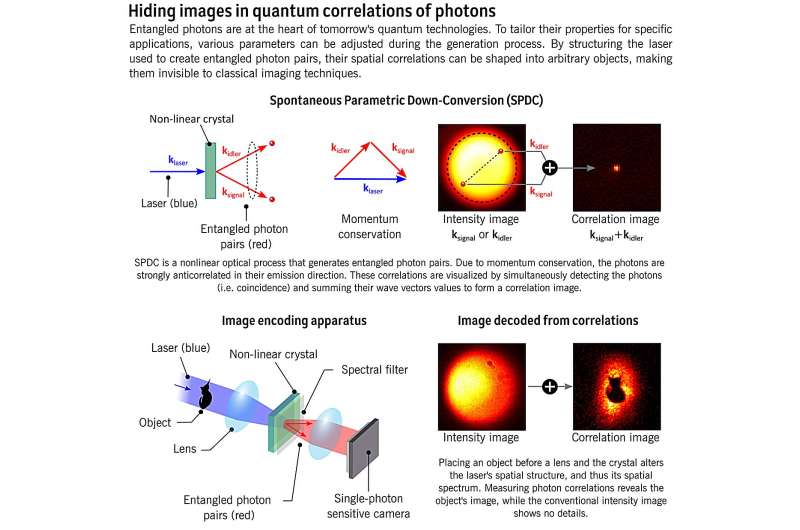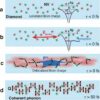What if you could hide an image in plain sight—so well that even the most advanced cameras couldn’t detect it? Imagine encoding visual information using the properties of quantum optics, rendering it invisible to normal imaging technology.
That’s exactly what a team of researchers from the Paris Institute of Nanoscience at Sorbonne University has accomplished, using entangled photons to develop a new method in quantum imaging.
Hugo Defienne and his team have developed a technique to encode images into the spatial correlations between entangled photons—particles of light linked in such a way that their spatial degrees of freedom are strongly correlated, even over great distances.
“Entangled photons are fundamental to many applications, such as quantum computing and cryptography,” says Chloé Vernière, Ph.D. candidate under the supervision of Defienne and first-author of the study published in Physical Review Letters. “Hence, it is crucial to be able to tailor the photons’ spatial correlations to meet different needs.”
The team explored how to shape this quantum property to encode visual information in a way that is invisible to standard cameras.
They used a process known as spontaneous parametric down-conversion (SPDC) to produce pairs of entangled photons. By passing a high-energy photon from a blue laser through a nonlinear crystal, the photon is split into two lower-energy entangled photons.
The experimental setup (see fig. 1a) involves projecting with a lens an image onto the nonlinear crystal in the path of the blue laser. Without the crystal, this setup behaves like a conventional imaging system, producing an image of the object. However, when the crystal is present, the process of SPDC takes place, and only the entangled photon pairs reach the camera.
What happens next is striking: Instead of seeing the image, the camera registers a uniform intensity (see fig. 1b), revealing no trace of the original object. Its information is now hidden within the quantum correlations between the entangled photons.
To uncover the hidden image, the researchers used a single-photon sensitive camera and developed algorithms to detect photon coincidences—events where pairs of entangled photons arrive at the camera simultaneously. By analyzing these coincidences, the researchers were able to reconstruct the image based on the spatial correlations of the photon pairs (see fig. 1c).

Diagram that conceptually summarizes the contribution of image encoding to quantum correlations. © Chloé Vernière and Hugo Defienne
“The image is transferred into the spatial correlations of the photons,” Defienne says. “If you try to observe it like you would with normal imaging—just by counting individual photons—you won’t see anything.
“But if you measure the simultaneous arrivals of photons and analyze how they are spatially distributed, the image appears. The key here is that we’re leveraging quantum properties of light that aren’t typically exploited in conventional imaging.”
Vernière adds, “This approach is highly flexible and relatively simple in its experimental design, which makes it promising for practical applications. We believe that by controlling the properties of the crystal and the laser, it may be possible to encode multiple images into a single beam of entangled photons.”
This technique could also be used in applications for secure quantum communication or even imaging through scattering media, like fog or biological tissues, as quantum light is stronger and more resilient than classical light.
This story is part of Science X Dialog, where researchers can report findings from their published research articles. Visit this page for information about Science X Dialog and how to participate.
More information:
Chloé Vernière et al, Hiding Images in Quantum Correlations, Physical Review Letters (2024). DOI: 10.1103/PhysRevLett.133.093601. On arXiv: DOI: 10.48550/arxiv.2403.05166
Chloé Vernière is a PhD student at Sorbonne University, in Paris, working in the Quantum Imaging team at the Paris Institute of Nanosciences. Hugo Defienne is a CNRS researcher at Sorbonne Unversity, in Paris, leading the Quantum Imaging team at the Paris Institute of Nanosciences. Their research interests include quantum optics, optical imaging and optics in scattering media.
Citation:
Physicists use quantum correlations of photon pairs to hide images from standard cameras (2024, September 23)



